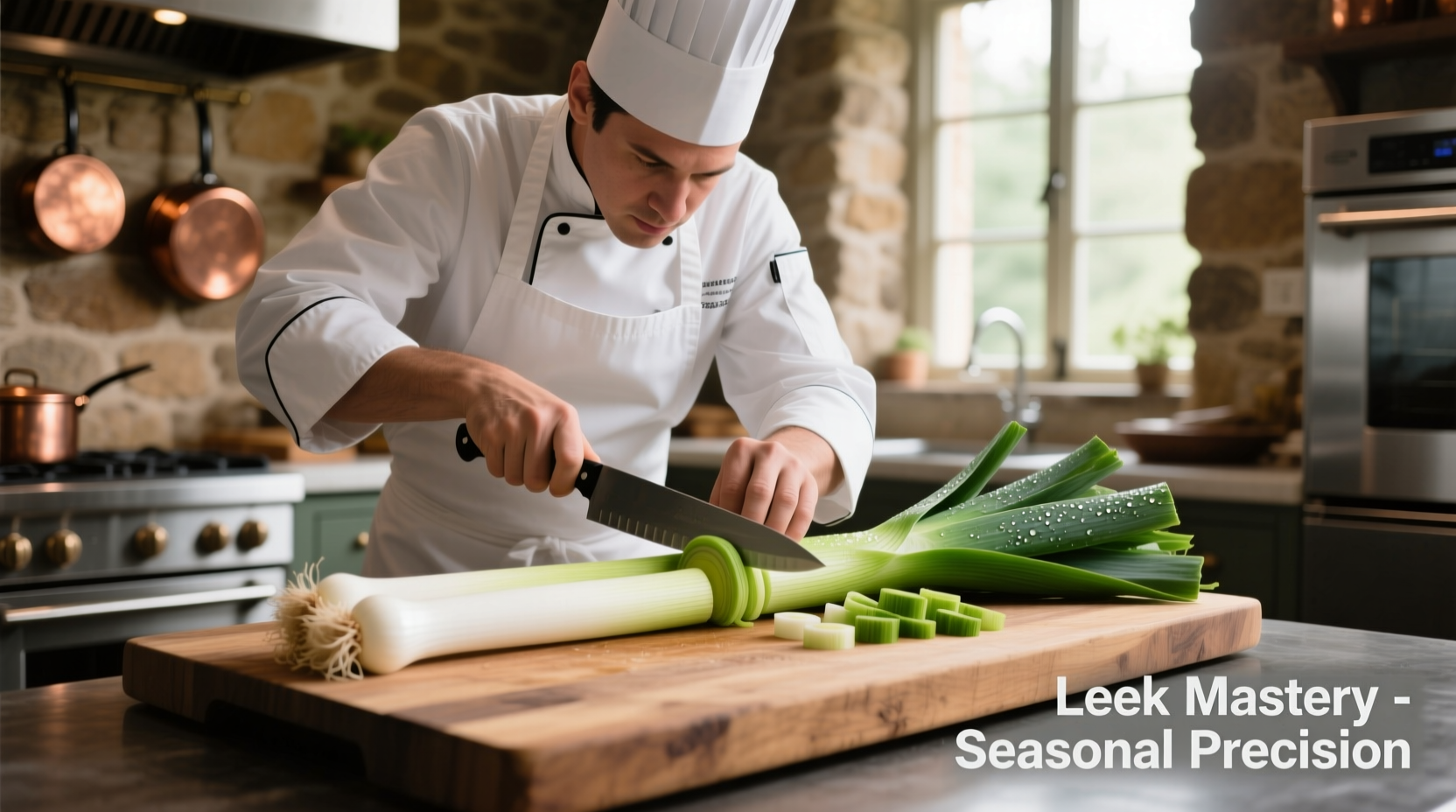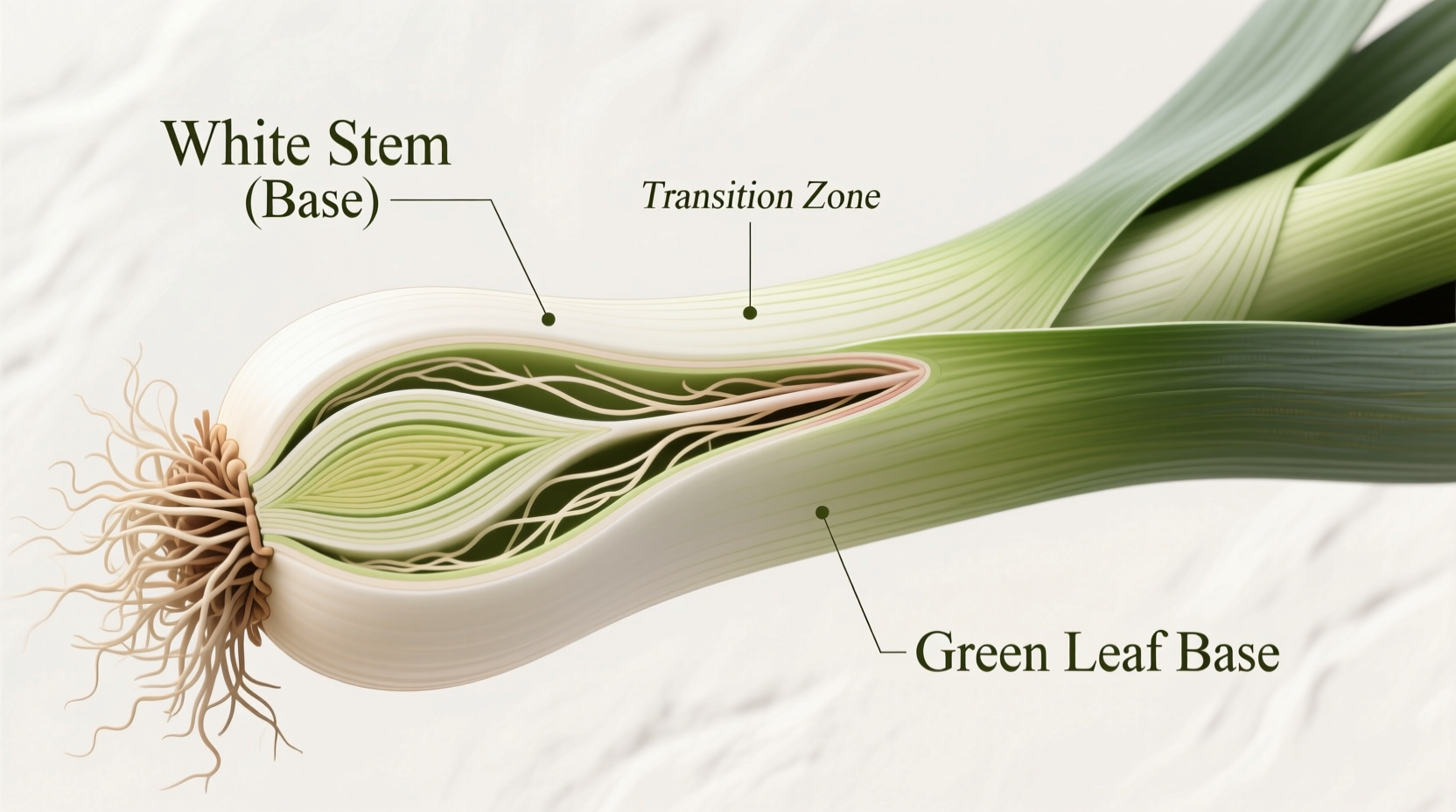Confused about which parts of a leek you can actually use in your cooking? You're not alone. Many home cooks mistakenly discard up to 70% of this versatile vegetable, wasting both flavor potential and money. Understanding exactly what part of the leek do you use transforms this humble ingredient from a confusing purchase into a kitchen powerhouse that delivers complex onion-like flavor without overwhelming sharpness.
Leek Anatomy: Beyond the Basics
Before we dive into usage, let's clarify leek structure. Unlike onions that grow underground, leeks develop elongated stalks with distinct sections:
- White base - The tender underground portion with mild flavor
- Light green transition zone - Gradually becomes more fibrous moving upward
- Dark green leaves - Tough, fibrous outer layers often mistakenly discarded
Professional chefs know that every part serves a purpose, but requires different handling. The key isn't whether parts are edible, but how to properly prepare each section for optimal results.
What Part of the Leek Do You Use: The Complete Guide
Let's break down exactly which portions work for different culinary applications. This isn't just about what you can eat, but what delivers the best flavor and texture in specific cooking scenarios.
| Leek Section | Edibility Rating | Best Culinary Uses | Preparation Tips |
|---|---|---|---|
| White base (0-3 inches) | ★★★★★ | Sautéing, roasting, raw in salads | Finely slice; no special prep needed |
| Light green section (3-6 inches) | ★★★★☆ | Soups, stews, quiches | Soften by cooking longer than white parts |
| Dark green leaves (top 6+ inches) | ★★☆☆☆ | Stocks, broths, flavor bases | Simmer 30+ minutes; strain before use |
Why You've Been Wasting Half Your Leek
According to USDA agricultural research, the dark green portions contain concentrated sulfur compounds that develop complex flavor when simmered slowly—exactly what makes restaurant-quality stocks so rich. Home cooks who discard these parts miss out on free flavor depth while creating unnecessary food waste.
The misconception that only white parts are usable likely stems from improper cleaning techniques. When leeks aren't prepared correctly, grit remains trapped between layers, making even the white sections unpleasant to eat. Master proper cleaning first, and you'll discover how much more of your leek becomes usable.
Professional Cleaning Method: Unlock Maximum Usable Portions
Follow this chef-approved technique to salvage every edible portion:
- Trim root end but leave 1/2 inch intact to hold layers together
- Cut off dark green tops at the point where color transitions to medium green
- Make a vertical slit halfway through the white/light green section
- Submerge in cold water for 10 minutes—dirt sinks, leek floats
- Gently separate layers underwater to release trapped soil
- Remove from water, shake off excess, and pat dry
This method preserves structural integrity while removing grit, making even the light green sections perfectly usable in delicate dishes. Save those dark green tops in your freezer for stock—just one large leek's discarded tops can flavor a full quart of broth.

Culinary Applications by Leek Section
Understanding what part of the leek do you use means matching each section to appropriate cooking methods. Here's how professional kitchens maximize every portion:
White and Light Green Sections: Direct Cooking
These tender portions work beautifully in dishes where leeks play a starring role:
- Raw applications: Finely slice white parts for salads or garnishes (soak in ice water for 15 minutes to crisp)
- Sautéing: Cook white/light green sections slowly in butter until translucent for French onion soup base
- Roasting: Toss thicker white sections with olive oil for caramelized vegetable sides
- Baking: Incorporate into quiches or savory tarts where mild onion flavor is desired
Dark Green Tops: The Flavor Powerhouse
Don't mistake fibrous texture for inedibility—these sections contain concentrated flavor compounds ideal for building foundations:
- Stocks and broths: Simmer with onion ends, carrot peels, and herb stems for 45 minutes
- Flavor bases: Chop coarsely and sweat with mirepoix for sauces and braises
- Freezer stash: Collect in labeled bags—3-4 leek tops make one stock batch
- Infused oils: Gently heat with olive oil for subtle onion flavor (strain after 20 minutes)
Research from the Culinary Institute of America confirms that simmering dark green leek portions develops more complex flavor compounds than using white sections alone—exactly why professional kitchens never discard them.
Avoid These Common Leek Mistakes
Even experienced cooks make these errors when determining what part of the leek do you use:
- Discarding all green parts - You're throwing away free flavor potential
- Not cleaning properly - Grit ruins texture and makes otherwise usable portions unpleasant
- Using dark greens in salads - Their fibrous texture doesn't work raw (save for stocks instead)
- Storing whole uncleaned leeks - Trapped moisture accelerates spoilage
Remember: The line between usable and unusable isn't fixed—it depends entirely on your cooking method. That tough dark green section that would ruin a salad becomes invaluable when simmered for stock.
Maximizing Your Leek Investment
When shopping for leeks, select firm stalks with minimal yellowing. Store unwashed in the refrigerator's crisper drawer for up to two weeks. For meal prep efficiency:
- Clean and slice white/light green portions for immediate use
- Store dark green tops separately in a freezer bag
- When making stock, add frozen leek tops directly to pot—no thawing needed
This approach ensures you're using what part of the leek do you use most effectively while minimizing waste. One 1-pound bunch of leeks yields approximately 2 cups of cleaned white/light green sections plus enough dark tops for two stock batches.











 浙公网安备
33010002000092号
浙公网安备
33010002000092号 浙B2-20120091-4
浙B2-20120091-4